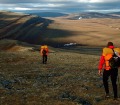Have you ever wondered what it would be like to walk more naturally and healthily? Are you interested in minimalist shoes and want to learn more about them? If so, you’ve come to the right place. In this article, I will explain how you can safely and effectively transition to minimalist or barefoot shoes.
Are you ready to take the first step? Let’s go!
Whether for health, athletic, or environmental reasons, it’s important to remember that the transition to barefoot shoes is a gradual process. It takes time to get used to a more natural way of walking and minimize the associated risks. Even though you may soon prefer your new minimalist shoes, you need to give your feet time. They have been trapped in conventional shoes for years, which are generally too tight and inflexible. This means that the feet are not challenged as nature intended. Rather, they are almost rigid in the shoe. Therefore, feet need to be slowly accustomed to barefoot shoes in order to gradually rebuild muscles and regain mobility.
Make sure to adapt your transition time and footwear to your current physical condition to ensure a safe transition. We all want a healthy and functional body that allows us to enjoy our favorite activities.
Analyze your walking style
Our natural way of walking is often altered by modern shoes. Due to the thick soles, our feet cannot feel the ground, which affects our perception and step. In addition, the lack of mobility in the foot and the inability to push off correctly with the big toe cause the body to compensate in ways that can lead to pain and wear in other parts of the body.
Unfortunately, the incorrect walking pattern acquired with unsuitable footwear persists even when we are barefoot, which can lead to injuries. We need to relearn the correct way to walk. Start slowly and make sure your step is gentle and light.
Consult a professional
If you have foot problems, consider consulting a podiatrist or specialist for personal advice. This is especially important to avoid injuries and ensure a safe transition.
Take your time
Our feet have many muscles and joints that have been trapped in tight, rigid shoes for years. These shoes have acted like armor and prevented our feet from developing and moving properly. As a result, our feet are weakened and deformed.
The time required for the complete transition to minimalist shoes varies from person to person, depending on the current condition of the feet, the type of footwear previously worn, and the time spent barefoot.
Even though some people can start using minimalist shoes immediately, not everyone will have the same experience. Start slowly and gradually increase the time you spend with minimalist footwear. Observe your body and give it time to adjust to the change.
Proceed gradually
Start with 30 minutes a day and gradually increase the time you spend with barefoot shoes. Generally, people need 2 to 3 months for the complete transition, although this can vary.
This way, you will slowly improve the mobility and strength of your feet, which will respond to the change with a greater distance between the toes and better mobility.
Incorporate „barefoot time“ into your routine
Incorporating „barefoot time“ into your routine can be very beneficial for ensuring a smooth and injury-free transition. Going barefoot daily, even if only at home, helps condition the soles of your feet and strengthen the muscles. If possible, walk barefoot outdoors on safe surfaces such as a level meadow, a forest path, or firm sand on the beach.
Do exercises to care for your feet and body
Modern life and its conveniences have negative effects on our bodies. Prolonged sitting and forced postures in front of the computer impair the mobility of our hips, posture, and body alignment. Each part of the body needs care to function properly, and the feet are no exception. Our feet, the only part of the body that constantly touches the ground, influence the overall balance.
Specific exercises for feet and body help improve mobility, balance, and strength and contribute to proper posture and optimal body function.
Use toe spreaders
Using toe spreaders is an effective way to support the transition from conventional footwear to minimalist shoes. These devices help control overpronation and distribute body weight evenly across the entire foot, promoting the natural strengthening of muscles and tendons.
Allow adjustments
The changes and deformities in the feet caused by conventional footwear develop over years, so it is natural that positive adjustments also take time. Some people do not allow enough time for their feet and body to strengthen and adapt, which can lead to initial fatigue and pain. Be patient and observe your body’s response during this transition phase.
It’s time for barefoot shoes!
The transition to barefoot shoes is an individual process that requires time and patience. With any major lifestyle change, it’s essential to take your time to prevent injuries. Now that you know what the transition to minimalist shoes should look like, it’s time to choose your first pair of barefoot shoes.
Are you ready to take the next step? Let’s go!













